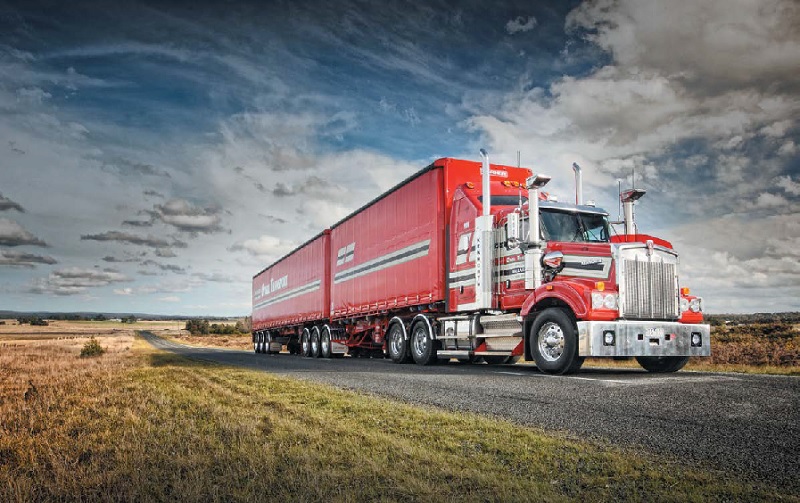
Fifty-four years ago, O’Neil Transport had its humble beginnings in Wallace in country Victoria.
While interstate linehaul today accounts for around 50% of the company’s revenue versus 40% for regional transport and 10% for intermodal container transport, the O’Neils – Tony and wife Anne-Maree – still consider themselves very much a country carrier at heart.
“We’ll always be a country or regional carrier – that’s where this business started and today we service around 90 towns in regional Victoria,” says Tony with a definite tone of pride.
Tony’s parents, Laurie and Carmel, started the business in 1965 purely as a local operation, servicing the small town of Wallace (just outside Ballarat) and nearby region which relied heavily on produce. Running into and out of the Melbourne markets, initially with a J model Bedford flat top, the O’Neils quickly established their reputation as a reputable carrier.
“Dad died when I was 18… that’s when I came into the business. I was a mechanic for Mercedes-Benz at the time. That was 35 years ago, in 1984,” Tony O’Neil recalls.
Today, based in Ballarat, the O’Neils have 39 Kenworths – most running as B-doubles – and 22 Isuzu rigids carrying out their freight task.
A Kenworth with a Cummins engine is never worth trading
Kenworth has been the prime mover of choice since the late 1980s when the business started to noticeably expand. “I’ve never traded a Kenworth,” he says. “I suppose I’m old fashioned. I like a high level of equity in the fleet, especially with the tight profit margins in road transport.”
His strategy is also testament to the build quality of the Kenworth product. O’Neil’s first Kenworth, a T600 ‘Anteater’, was put into service in 1989 and it wasn’t until late 2002 that his first Cummins – a Signature 550 – came into the fleet in a Kenworth K104.
“That truck has now done 2.6 million kilometres and is on its third engine – it had the original Signature and is now on its second new ‘crate’ engine,” he explains. “Our preference now is to install new crate engines instead of rebuilding our engines. The truck isn’t off the road as long.”
Cummins’ service support is critical to the O’Neil operation. “The important thing to me is that Cummins backs its product. If there’s a problem, Cummins supports us,” he says.
“The Cummins Laverton (Melbourne) branch has been very good to us.”
"The important thing to me is that Cummins backs its product."
Cummins ISXe5 engine gives peak performance with regularly supported maintenance
The ISXe5 has been the stand-out Cummins engine for O’Neil since the first unit went into service in 2013. “I’m really comfortable with the ISXe5. It is the single biggest improvement in life-to-overhaul and fuel economy since I’ve been in business,” he states.
“We have 13 in service in Kenworths and the oldest did 1.2 million kilometres before overhaul. I wouldn’t be surprised if we can exceed that figure with the rest of the engines.”

Tony O’Neil is meticulous with his record-keeping, and he has at his fingertips a life-time record of every maintenance item for every truck – and its cost. Trend lines are easy to detect, aiding in maintenance planning and reduced downtime.
Routine servicing, including engine oil sampling, is carried out every 20,000 km. “I have a record of every oil sample carried out on a Cummins engine since 2002,” he says.
Major truck servicing is carried out every 700,000 km with items such as kingpins, tie rod ends, torsion rod bushes, front brakes and drums, engine idler pullies and fan on the changeout schedule.
A quiet efficiency pervades the O’Neil operation. There’s a job to get on with, a job that’s done with sensible goals and clearly defined business procedures, and a premium fleet of vehicles strongly supported by the equipment suppliers.